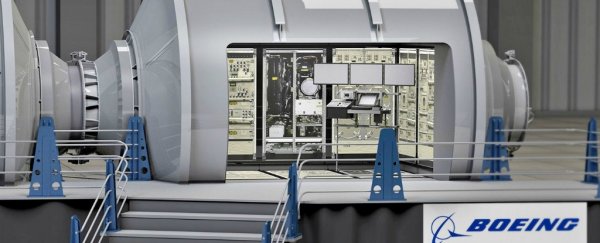NASA is reaching out to private companies to help them create full-scale, Earth-based prototypes of space habitats that might one day house astronauts tasked with exploring the outer reaches of our Solar System and beyond.
So far, NASA has contacted six US-based companies to help in the development of these deep space habitats. Each had applied to become partners in NASA's Next Space Technologies for Exploration Partnerships (NextSTEP-2) program.
Launched in 2015, the first round of the NextSTEP program aimed to bring scientists and private companies together to develop the next generation of space exploration technologies. Its aim was to seek out partners that can advance NASA's understanding of propulsion, habitation, and small satellite production.
This time around, NASA hopes it will have similar success in trying to figure out deep space habitation by building full-scale replicas here on Earth - an extremely complicated task, since the habitats will not only have to keep the astronauts alive in some pretty hostile environments, it also needs to give them enough facilities to perform experiments.
"An effective habitat comprises a pressurised volume plus an integrated array of complex systems and components that include a docking capability, environmental control and life support systems (ECLSS), logistics management, radiation mitigation and monitoring, fire safety technologies, and crew health capabilities," NASA officials said.
The six companies that got the nod to help NASA create full-scale versions here on Earth are Bigelow Aerospace LLC, Boeing, Lockheed Martin, Orbital ATK, Sierra Nevada, and NanoRacks.
"The ground prototypes will allow NASA and the partners to evaluate configurations of the habitat, how the various systems interact together, and with other capabilities like propulsion modules and airlocks, and will provide platforms to test and ensure the standards and common interfaces being considered are well thought out," the team said.
We don't know exactly what these designs are going to look like just yet, but NASA will hopefully have more updates as the construction process begins to take shape.
Only time will tell if any of these designs will go into production, but it's exciting to see how NASA and the private sector can come together to push the limits of technology.
